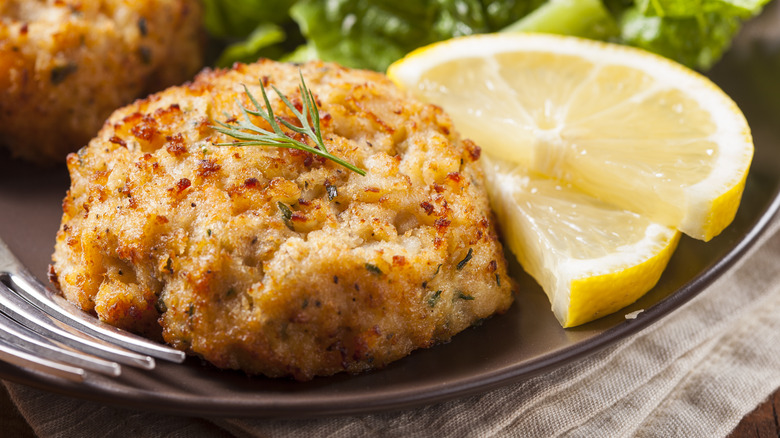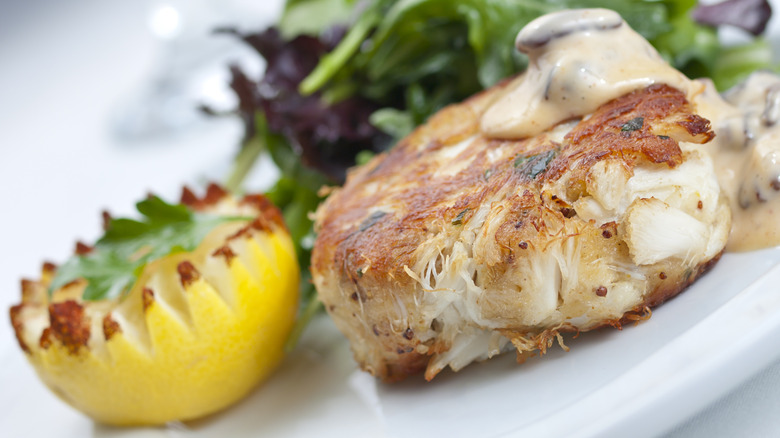Breadcrumbs May Be To Blame For Your Dry And Crumbly Crab Cakes
A good crab cake is moist and succulent; more "crab" than "cake." The best way to achieve the desired taste and consistency is to use the bare minimum of breadcrumbs – just enough to bind the crab cake mixture together. Overdoing it on the breadcrumbs will lead to dry and crumbly crab cakes that taste more like crab-flavored stuffing than a proper crab cake.
The easiest way to control the amount of breadcrumbs used is to forget about the amount called for in a recipe. Mix the wet ingredients first, and then gradually fold in the breadcrumbs a little at a time, stopping as soon as the crab cake mixture holds together. The breadcrumbs are not intended to add any flavor, so nothing is lost by limiting the amount used. Plus, avoiding that "cakey" texture that too many breadcrumbs bring to the mix is what will make your crab cakes stand out.
Consider the alternatives
The instinct to add a lot of breadcrumbs to the crab cake mixture is understandable in that it often stems from someone trying to stretch out the relatively expensive crabmeat and get more for the money. (Lump crab, which is often recommended as the best choice for crab cakes, can be especially pricey). But "best choice" doesn't mean "only choice," and the less expensive types of crab meat such as claw or backfin — a blend of lump crab with flaked white meat from the body — will work perfectly well in a crab cake, especially if the texture and flavor of the crabmeat aren't masked by an excess of breading.
Try a lighter alternative to traditional breadcrumbs as a binding agent in your crab cakes, as well. Panko bread crumbs — the crispy Japanese-style breadcrumb made from bread without the crusts — are an excellent option for crab cakes, as are crushed saltine or butter crackers.

